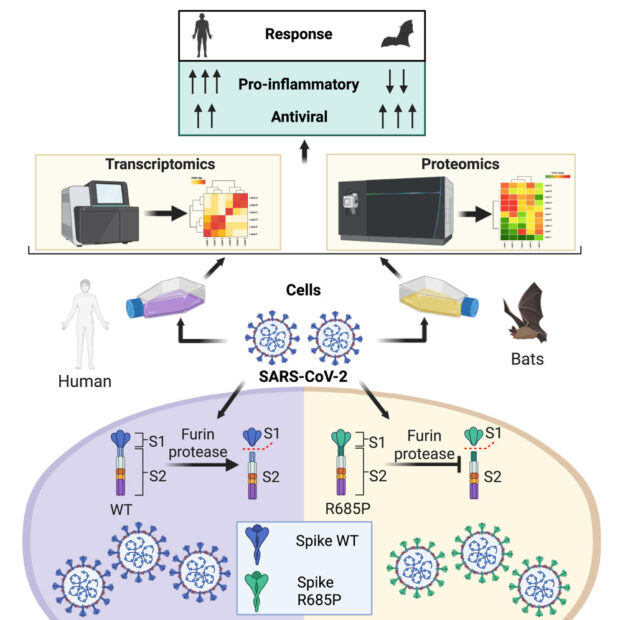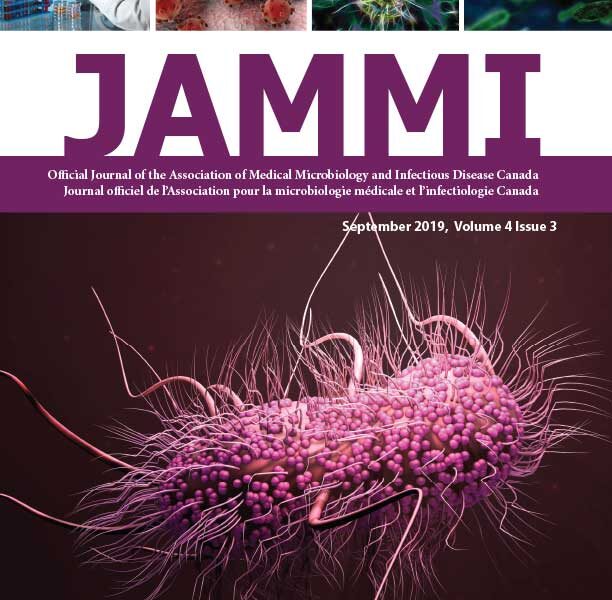 Baid et al. 2015. Cell Reports 44, 115929.
Baid et al. 2015. Cell Reports 44, 115929.
SARS-CoV-2 has caused the largest known coronavirus pandemic and is believed to have emerged from insectivorous bats. Little is known about the evolution of these viruses in their reservoir bat species. In this study, we investigate the SARS-CoV-2-host interaction using human and bat cells. Bat cells mount a robust and early antiviral response but elicit a dampened proinflammatory response upon SARS-CoV-2 infection compared to human cells. Furthermore, an inactivating R685P mutation within the furin cleavage site (FCS) of the SARS-CoV-2 spike protein is naturally selected for in infected bat cells. Taken together, our data demonstrate that insectivorous Eptesicus fuscus bat cells have evolved a differential antiviral immune response against SARS-CoV-2 infection, likely contributing to their disease tolerance ability. Our study sheds light on the evolution of sarbecoviruses in bats and extends molecular evidence to data from field studies that have demonstrated that SARS-CoV-2-related viruses in wild-caught bats lack an intact FCS.

